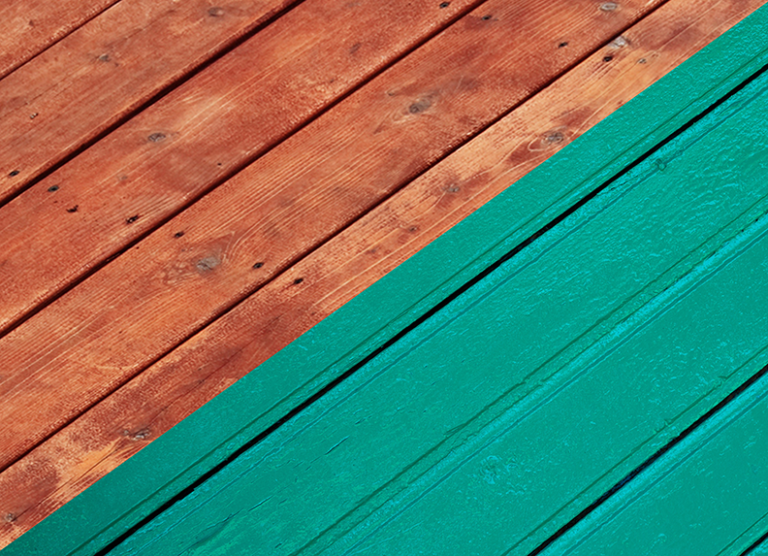Stain and paint have many similarities, but also many differences. People often wonder which one they should use or which one is better than the other. However, the answer to that question is more complex than you think. While both yield great results, the differences between stain vs. paint will help determine which one you should use. Read further to learn more about the differences and similarities in these two color yielding substances. Once you learn more about stain vs. paint, you can decide which one is better suited for your project.
Paint

Paint is more commonly used for projects around the house such as walls, outside of the house, doors, shutters, and other craft projects (e.g. pictures, frames, etc.). The main difference between paint and stain is that paint sits on top of the surface rather than seeping into the surface. Additionally, paint generally comes in more colors than stain and often costs more money per gallon. There are also a variety of sheens and mattes for paint, so you can pick the style you want to use in just about any color. Paint also needs to be painted onto surfaces that have been primed first, while stain does not. Paint also takes more time to apply than stain and usually needs several coats of application.
Stain
Stain is typically less costly than paint and comes in fewer colors and options. It is typically used for wood projects but there are some options available for concrete as well. However, stain is easier to apply and often does not need more than one coat. The main difference in the application of stain is that it does not need to be painted onto a primed surface. In fact, it can be painted directly onto any surface you want. And one coat usually does the trick. The stain will absorb into the surface of what you are staining rather than staying on top. This makes stain especially great for wood projects, as the stain soaks into the wood grain and creates a beautiful texture and look.
The look created with stain and wood really brings out the natural grain and patterns in the wood. You can also control the shade of the stain by applying more or less to your project depending on the look you’re going for. Also, stain does not peel like paint does, which is an added bonus. Keep in mind that the more absorbent the wood or surface you are staining, the more stain you will need to fully coat the surface. That is probably the biggest disadvantage of stain as opposed to painting.
As you can see, there are many differences between paint vs. stain. However, both are equally capable of creating beautiful, vibrant results for all of your projects.
